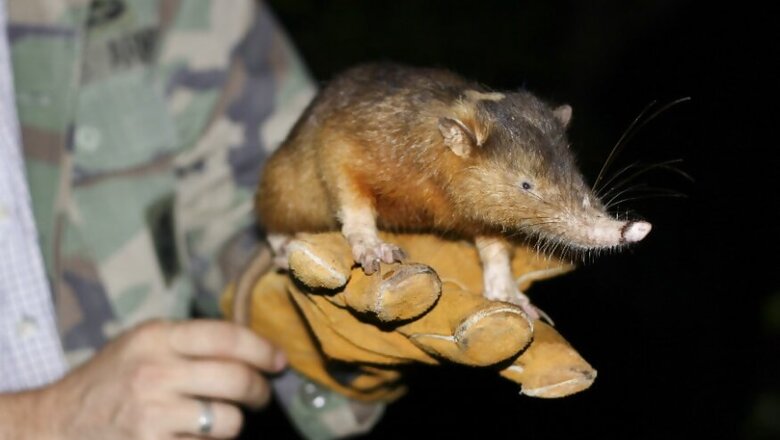
views
The Hispaniolan solenodon is a wondrously strange creature.
About the size of a guinea pig, it has a long, hairless snout, sharp little teeth and, to top it all off, venom-laced saliva. Highly endangered, it lives quietly in the forests of the Dominican Republic and Haiti, and scientists have been hard-pressed to understand much about its habits and evolution.
But in a paper published Tuesday in the Proceedings of the National Academy of Sciences, a diverse group of researchers outline the intriguing conclusions they reached about how the solenodon got its dangerous spit after they sequenced its genome and analyzed its venom.
It was not easy finding solenodons to study, said Nicholas Casewell, a venom expert at the Liverpool School of Tropical Medicine in England and a co-author of the new paper. The team managed to track down two of the animals in the wild with venom they could sample.
At the National Zoological Park in the Dominican Republic, they took blood for genome sequencing from another solenodon — one of a handful of captive specimens in the world. They compared the genome to those of related animals, like hedgehogs, moles and shrews, and identified substances present in the venom, including a set of enzymes called kallikreins.
Kallikreins mince up other proteins, including some involved in maintaining blood pressure. Researchers injected mice with solenodon venom and saw that indeed, while their pulse and breathing did not change, their blood pressure dropped precipitously as soon as the venom went in. This could render prey foggy-headed and easier for the solenodon to finish off, researchers suggest.
Another venomous mammal among the solenodon’s relatives, the northern short-tailed shrew, also has kallikreins in its venom.
“To us, it was a real surprise to find very similar proteins in the venom of the solenodon and shrews,” Casewell said.
They asked whether venom might have existed in the common ancestor of moles, hedgehogs, shrews and solenodons. But if a common ancestor did have this trait, an improbably large fraction of its descendants would have had to mysteriously lose it for the modern family tree to make sense.
Researchers concluded that it is more likely that shrews and solenodons came up with the adaptation after they branched off from these other small mammals. They think the trait is likely to have evolved independently in each animal, as shrews and solenodons do not use the exact same kallikreins in their venom.
But the fact that there is an overlap in these enzymes in two different animals implies that mammals have a very limited palette of options to work with when it comes to ginning up a venom. Kallikreins are commonly present in mammal saliva, so modifying them little by little to get something more dangerous is a plausible route for venom’s evolution.
Researchers wonder, however: Are solenodons still using their venom? The last 500 years have seen the extinction of many prey species, like lizards, birds and other vertebrates, on their home island. This ecological destruction has left behind mainly insects, which may not be affected by the venom.
Casewell and his colleagues hope that future observations of wild solenodons on the hunt may provide insight into whether the unusual venom is still useful to solenodons in their daily lives or if it is a relic of a time, and an ecosystem, that no longer exists.
Veronique Greenwood c.2019 The New York Times Company













Comments
0 comment